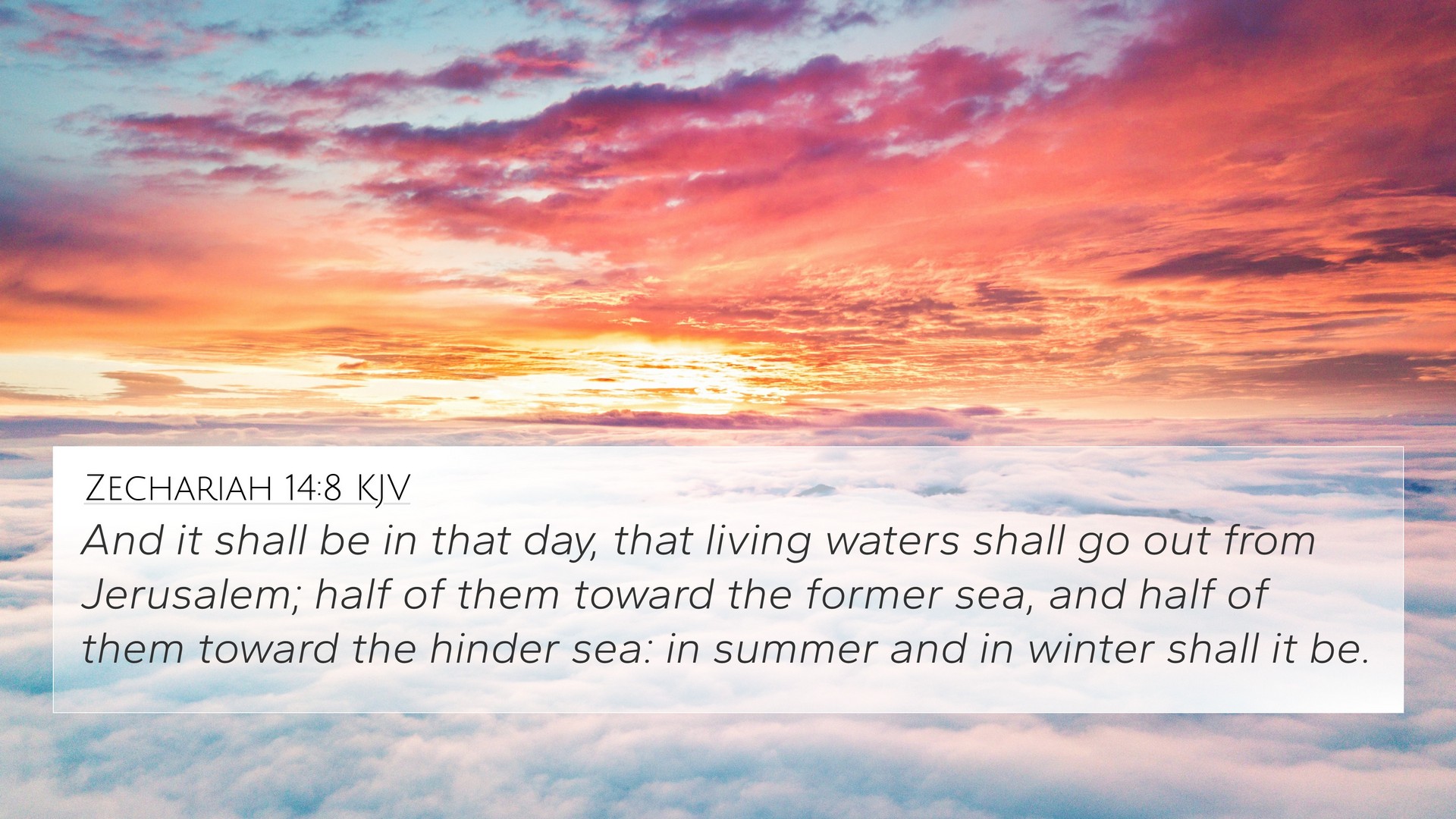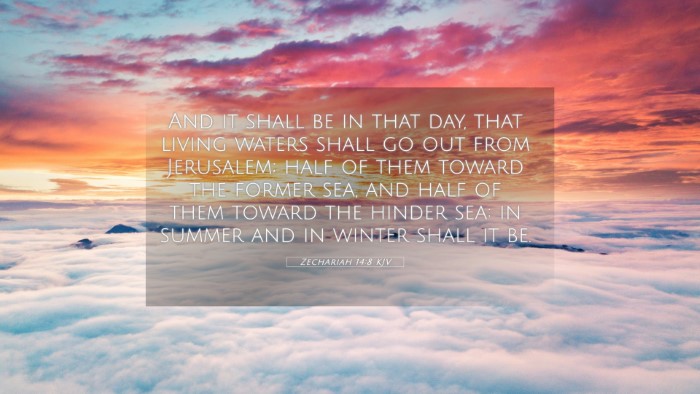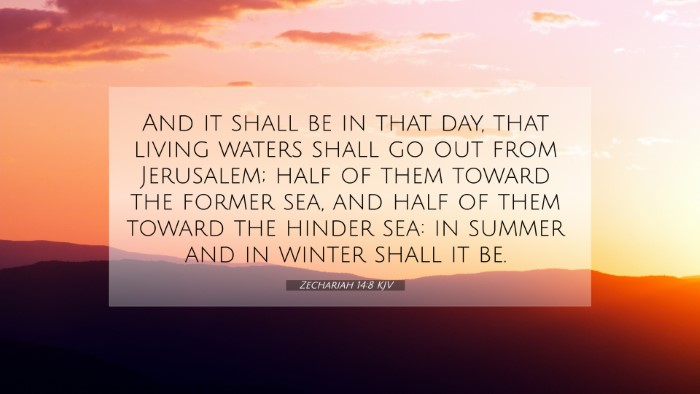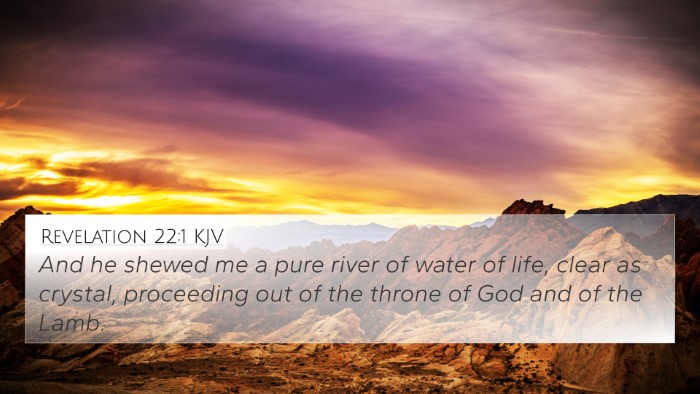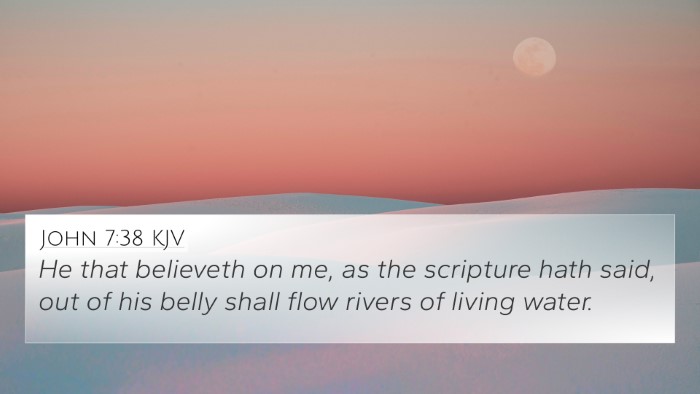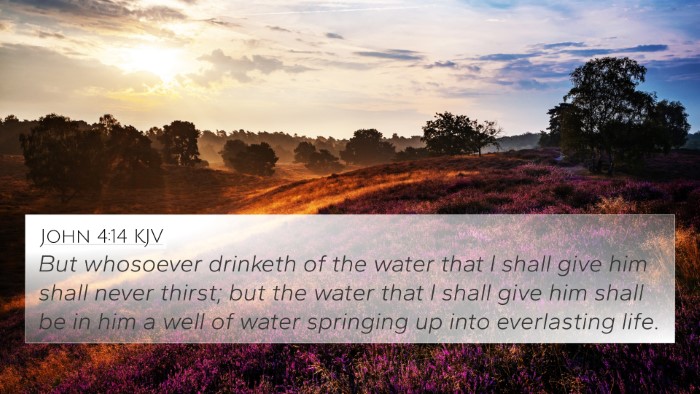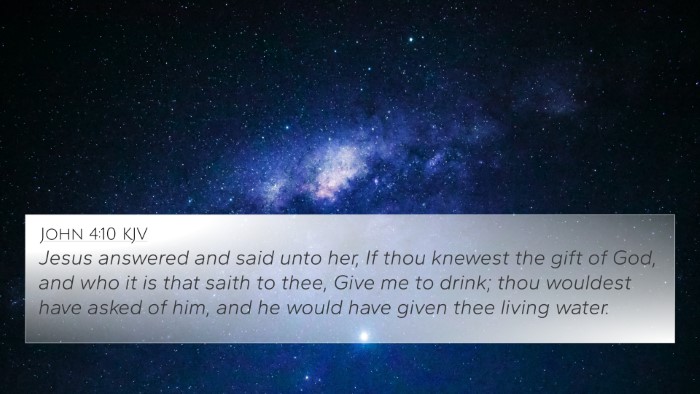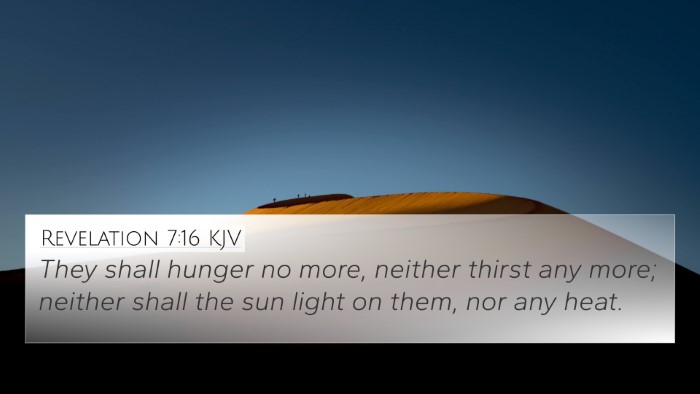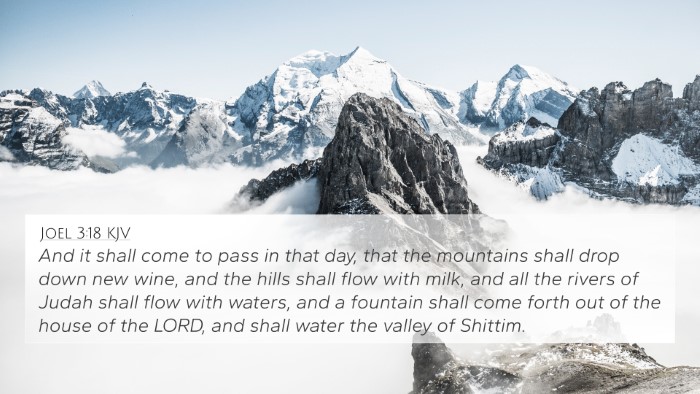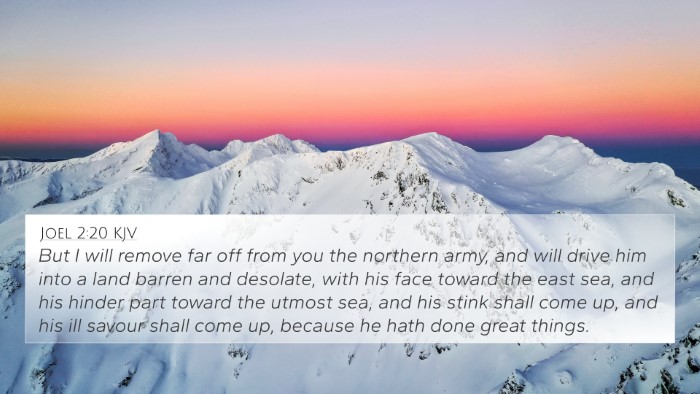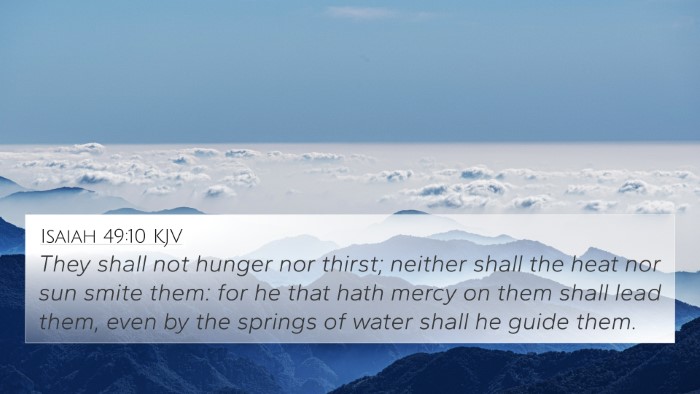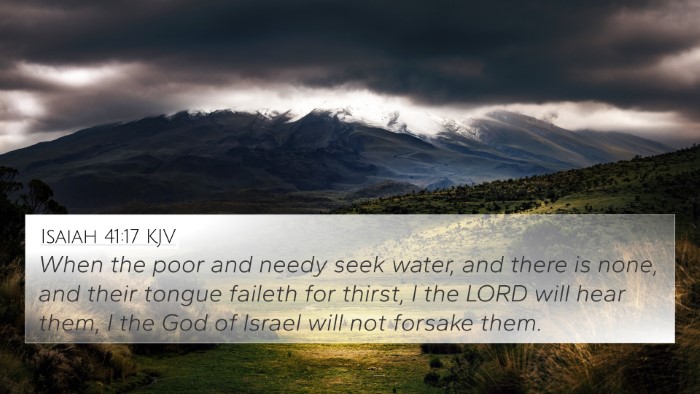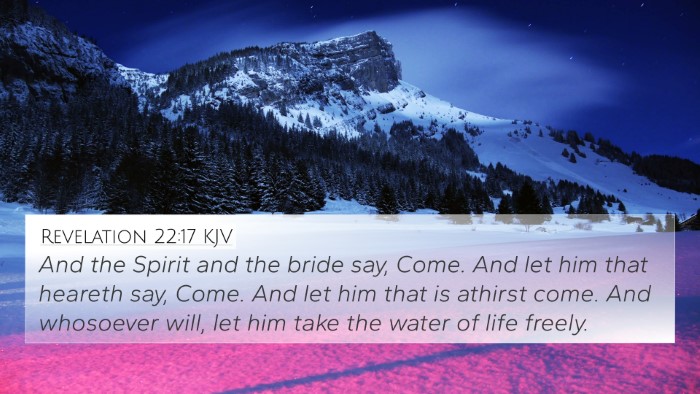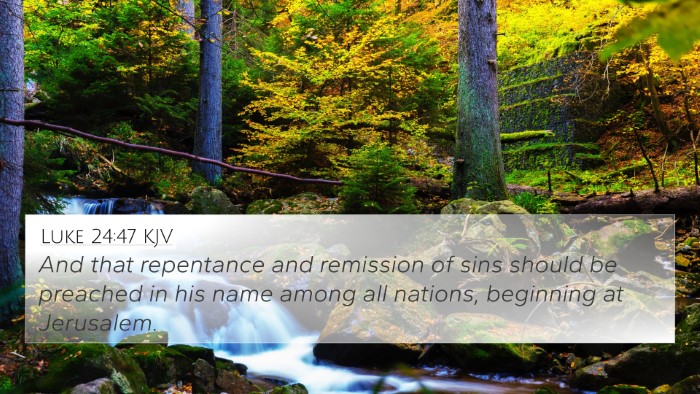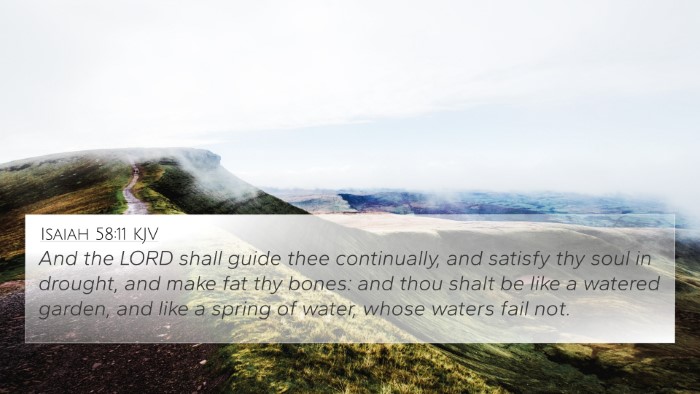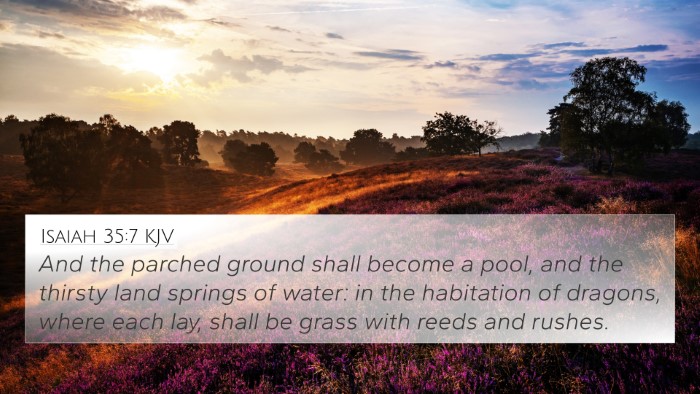Understanding Zechariah 14:8
Zechariah 14:8 states: "And it shall be in that day that living waters shall flow from Jerusalem, half of them toward the former sea and half of them toward the hinder sea; in summer and in winter shall it be."
This verse is a prophetic image of restoration and abundance flowing from Jerusalem, symbolizing spiritual and physical blessings that will come in the last days. It holds significant theological implications that can be explored through cross-referencing various Biblical texts.
Commentary Insights
Matthew Henry: Henry notes that living waters represent the grace of God that revitalizes and brings life to all who partake of it. The imagery of flowing water signifies prosperity and the dissemination of God’s blessings to both Israel and the Gentiles. It underscores God’s promise to restore His people and provide them with spiritual sustenance.
Albert Barnes: Barnes emphasizes the geographical aspect of the verse, where the waters flow both to the east (the Dead Sea) and to the west (the Mediterranean Sea). This symbolizes the expansive reach of God’s salvation and blessings. He also highlights the continuous nature of this flow, denoting that God’s grace will not only be present but also apposite in all seasons, an eternal promise of life.
Adam Clarke: Clarke elaborates on the metaphor of “living waters,” arguing that it denotes the Holy Spirit's outpourings and the revitalization of the church. It suggests that Jerusalem will become the source of spiritual life not just in summer but in winter too, reflecting the unwavering permanence of God’s grace. This duality of seasons embodies a comprehensive focus on God’s unending support.
Cross References
Zechariah 14:8 correlates with multiple Biblical texts that enhance the understanding of its prophetic message. Here are some key cross-references:
- John 7:38: "He who believes in Me, as the Scripture has said, out of his heart will flow rivers of living water." – Emphasizing the living waters that flow from believers.
- Ezekiel 47:1-12: The vision of waters flowing from the temple, showing the life-giving attributes of water.
- Revelation 22:1-2: The river of life in the New Jerusalem symbolizes Christ's eternal provision for His people.
- Isaiah 12:3: "With joy you will draw water from the wells of salvation." – Illustrates the act of receiving from God’s wells.
- Jeremiah 2:13: "For My people have committed two evils: They have forsaken Me, the fountain of living waters…" – Contrasting the abandonment of God’s provision with its fullness.
- Joel 3:18: "And it will come about in that day that the mountains will drip with sweet wine, and the hills will flow with milk, and all the brooks of Judah will flow with water." – A picture of abundance and blessing associated with God’s presence.
- Psalms 46:4: "There is a river whose streams make glad the city of God, the holy dwelling places of the Most High." – A reference to the spiritual joy in God’s provision.
Thematic Connections
The themes present in Zechariah 14:8 can be connected to broader Biblical principles. Some important themes include:
- Restoration: The promise of renewal and hope for Jerusalem parallels messages found in Isaiah and Jeremiah regarding the restoration of Israel.
- The Role of the Holy Spirit: The living waters symbolize the work of the Holy Spirit, a theme that echoes throughout the New Testament, especially in gospel texts.
- God's Provision: The continuous flow of water signifies God's ongoing provision, reminiscent of His promises made in Deuteronomy and Psalms.
Conclusion
In conclusion, Zechariah 14:8 serves as a pivotal verse that reflects God’s promise of living waters symbolizing spiritual revitalization and abundance, facilitated through Christ and the Holy Spirit. By engaging in comparative Bible verse analysis and cross-referencing, believers can deepen their understanding of these prophetic themes, underpinning the richness of the Bible's interconnected messages.
Tools for Cross-Referencing
To effectively utilize the insights of cross-referencing in studying Zechariah 14:8, consider using the following tools and methods:
- Bible concordance for locating specific topics and themes across the Scripture.
- Cross-reference Bible study guides that provide structured insights into thematic connections.
- Cross-referencing Bible study methods that encourage deep engagement with the text.
- Utilizing Bible reference resources for comprehensive understanding.
Further Study Ideas
For those interested in diving deeper into cross-referencing and analyzing the connections between Bible verses, consider exploring the following:
- Identifying connections between the Old and New Testament using various online platforms.
- Conducting a detailed cross-reference study between the Gospels and the epistles.
- Examining similarities and contrasts between prophetic books and the New Testament teachings.
